
School uniform was introduced in Russia in 1834. Back then, boys and girls went to separate educational facilities. Private schools for girls, also called gymnasiums, introduced uniforms in 1896.
Above: Russian grammar school students take a group picture in 1913.
Above: Russian grammar school students take a group picture in 1913.
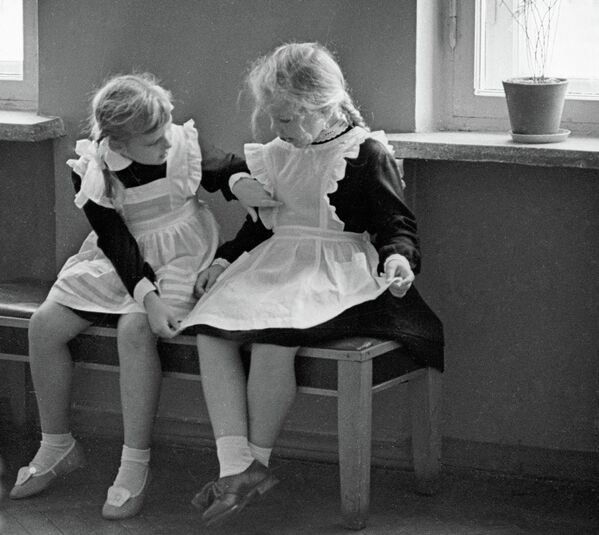
School uniforms were banned after the revolution, but brought back in 1948, after the WWII. Accessories, fancy hairstyles and high heels were banned, along with any alterations of the skirt length.
Above: Girls sitting on a bench in school #7 in Moscow.
Above: Girls sitting on a bench in school #7 in Moscow.
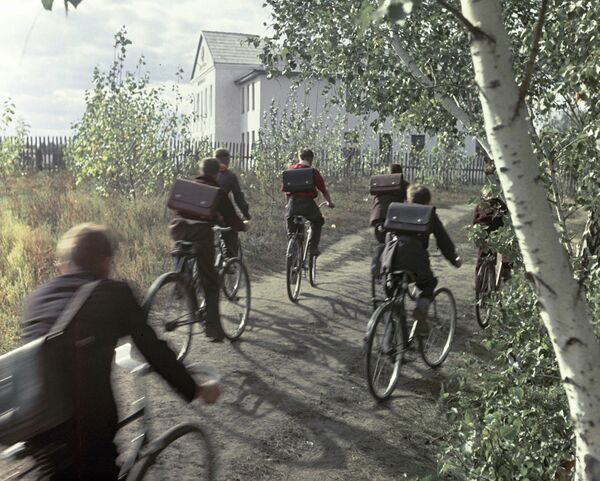
In 1960 the school uniform was updated to match a more peaceful lifestyle in Russia. Strict prohibitions were dropped, students were allowed to wear winter coats of their choice.
Above: Students riding their bicycles to school in the 1960s.
Above: Students riding their bicycles to school in the 1960s.
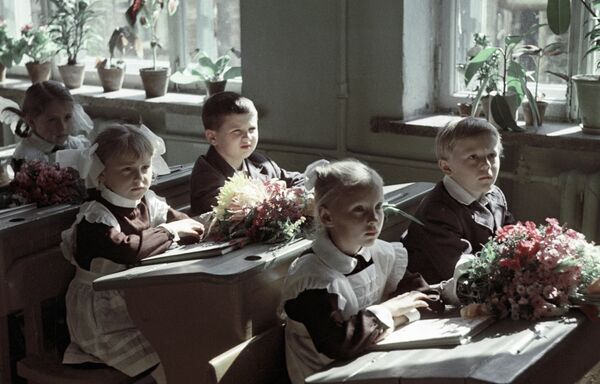
The 1970s brought fashion and freedom into the world. Despite being fairly closed off from the rest of the world, the Soviet Union had to comply. The school uniform was made to imitate trendy denim coats, complete with colorful patches on the arms.
Above: First grade students in a Russian school in the 1970s.
Above: First grade students in a Russian school in the 1970s.
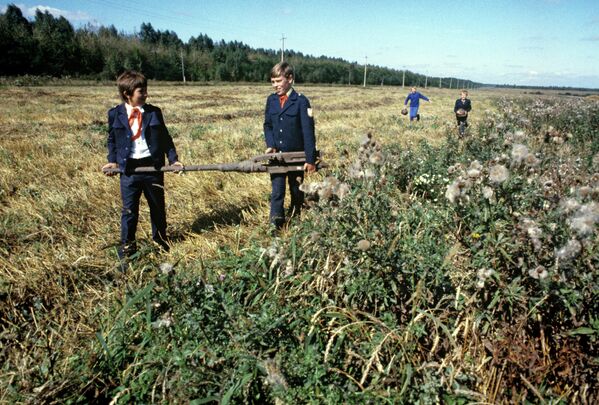
In the 1980s, girls were allowed to wear pants, choose the color of their uniform (it came in blue or brown)and wear their hair down.
Above: Students of school #42 pick rusty helmets, cartridge shells, and shotguns left over after World War II, 1980s, Kursk, Russia.
Above: Students of school #42 pick rusty helmets, cartridge shells, and shotguns left over after World War II, 1980s, Kursk, Russia.
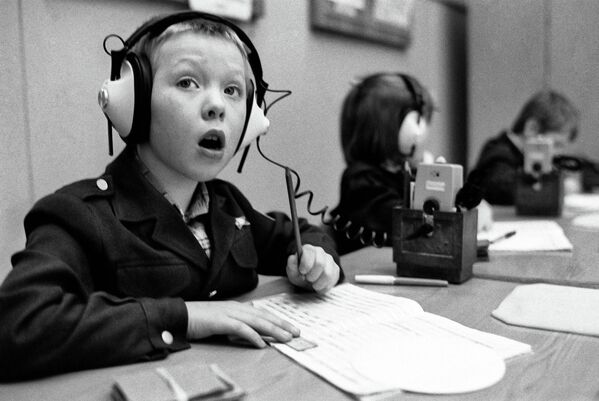
After the fall of the Soviet Union, school uniforms were no longer compulsory, as they reminded of the old regime. Instead, students opted for modern pants and blazers.
Above: Students at a Moscow boarding school for deaf children during a lesson in a classroom equipped with sound-amplifying systems, 1990.
Above: Students at a Moscow boarding school for deaf children during a lesson in a classroom equipped with sound-amplifying systems, 1990.
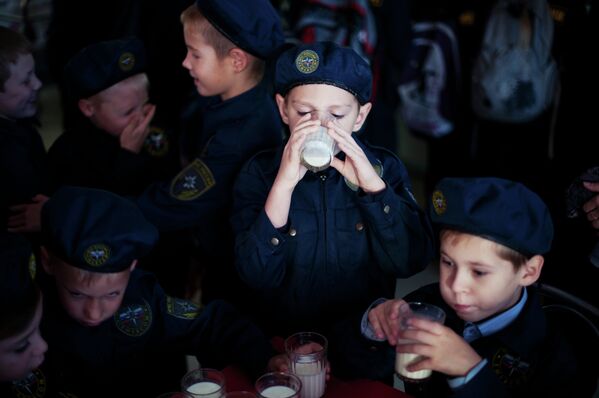
Although military schools still require students to wear a uniform, the majority of Russian schools have no regulations regarding clothes, hair, footwear or makeup.
Above: Young cadets are having lunch in a school cafeteria in the military town of Zarechny, 2012.
Above: Young cadets are having lunch in a school cafeteria in the military town of Zarechny, 2012.
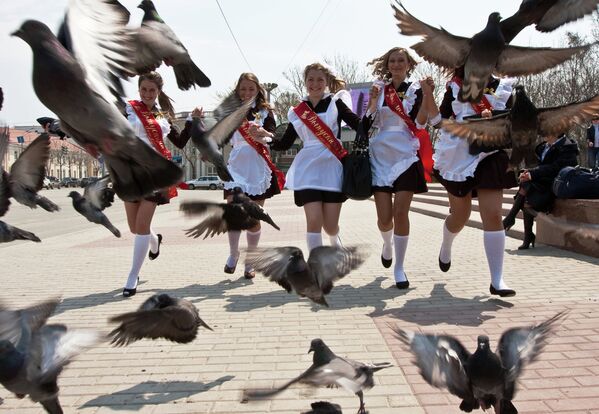
Since the 1990s students are no longer required to wear a uniform every day, but dressing in a Soviet uniform on the last day of school has become a new tradition in Russia.
Above: Students walk along the streets of Yuzhno-Sakhalinsk after the "Farewell Bell" celebrations.
Above: Students walk along the streets of Yuzhno-Sakhalinsk after the "Farewell Bell" celebrations.

